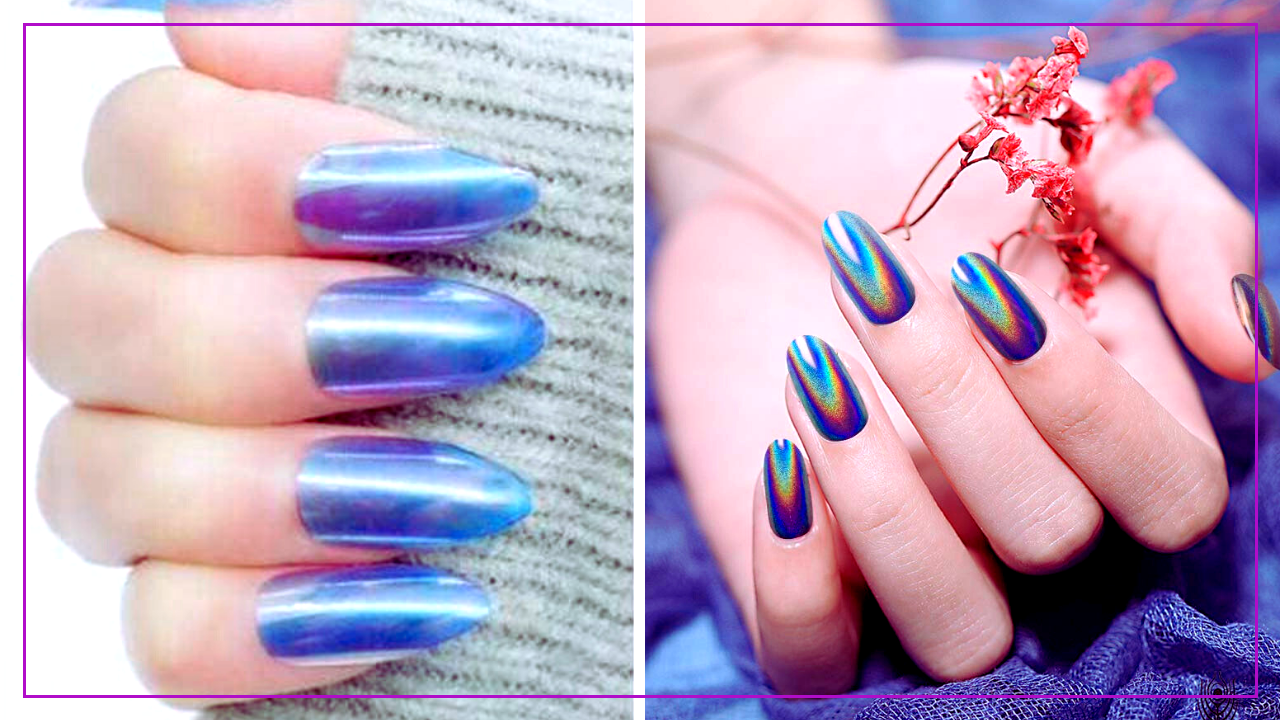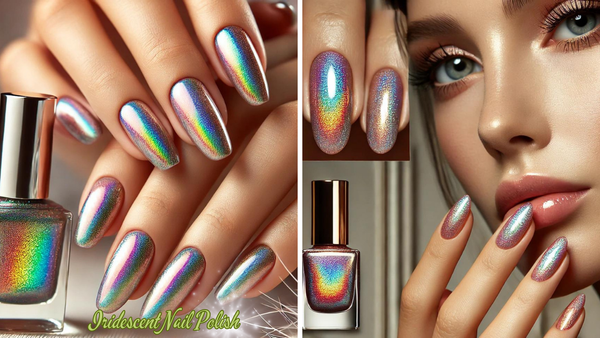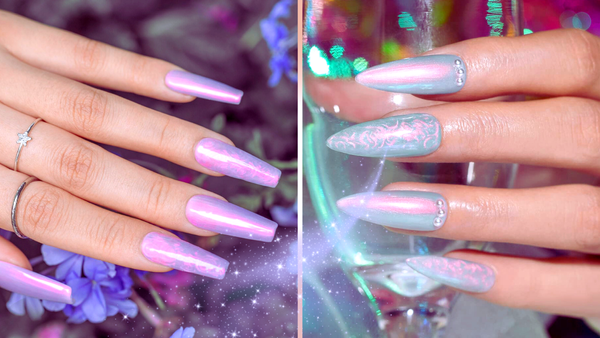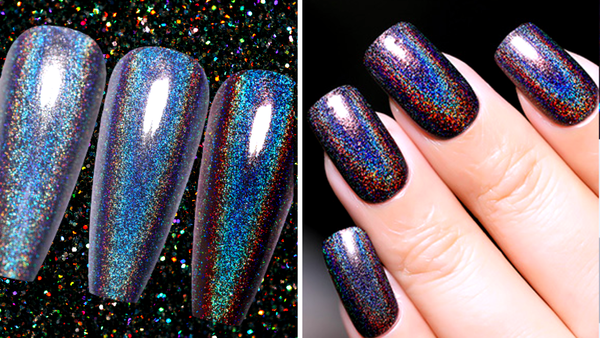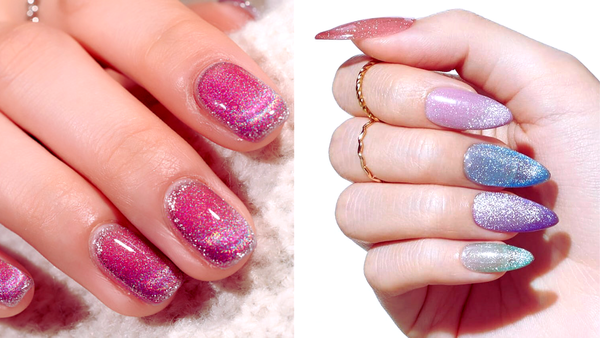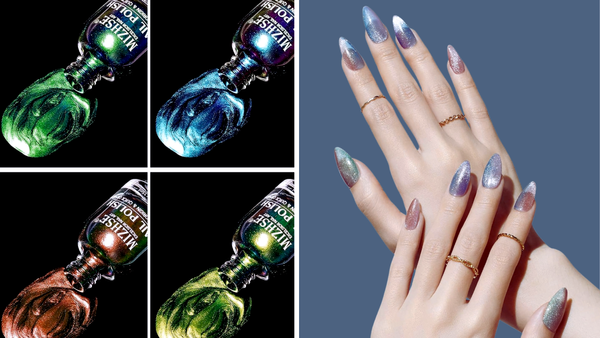Key Takeaways:
- Holographic nail polish creates a rainbow spectrum effect under direct light due to its special pigments.
- Iridescent nail polish offers a color-shifting look that changes with the angle of light, providing a subtle glow.
- Understanding the distinct visual effects and formulations can help you choose the right polish for your desired style.
Nail art is an ever-popular form of self-expression, and choosing the right type of polish is crucial for achieving the desired effect. Two types that often cause a mix-up are holographic and iridescent nail polishes. Both bring unique elements to your nails but differ significantly in their visual impact and the technology behind them.
The Science Behind the Shine

Holographic nail polish, often called holo polish, contains microscopic holographic particles that act like tiny prisms. These particles catch and disperse light into a spectrum of colors, creating a vivid rainbow effect. The concentration and arrangement of these holographic particles can lead to a 'linear holo polish' effect, where the particles create solid rainbow lines across the nails, distinguishing them from the more scattered holo effect. This phenomenon is most visible under direct lighting, such as sunlight or a desk lamp, where the true magic of holo can come to life.
Iridescent nail polish, on the other hand, works on the principle of light interference. It contains mica or other iridescent pigments that reflect and refract light. This refraction results in a multi-chromatic finish where the color changes based on the viewing angle. The effect is more subtle than holographic polish but equally mesmerizing.
Visual Impact: Rainbow vs. Color Shift
The holographic effect is all about drama. When exposed to light, holographic polishes show a distinct and intense rainbow-colored spectrum. This makes them a favorite for those who love a bold and eye-catching manicure. The effect is often so strong that it almost looks like your nails are lit from within.
Iridescent polishes are more about subtlety and complexity. They offer a duochrome or multichrome finish, where the nails change color depending on the light and angle. This can range from a gentle purple glow to a sudden flash of chrome-like shine, making them perfect for those who prefer a more understated elegance.

The Role of Lighting in Nail Polish Effects
When exploring "what is the difference between holographic and iridescent nail polish", lighting plays a pivotal role. Holographic nail polish, often called holo, demands direct light to unleash its full potential. Under a desk lamp or sunlight, these polishes reflect a dramatic rainbow effect, showcasing a spectrum of colors that dance across the nail surface. This is because the tiny flat silver glitter particles in the polish act like mini prisms, catching and dispersing light in a dazzling display.
On the other hand, iridescent nail polishes work a bit differently. These polishes contain iridescent pigments that give a color-shifting look, changing hue when viewed from different angles. The iridescent finish doesn't rely on direct light like holographic polishes but benefits from subtle shifts in ambient lighting. Whether under the soft glow of a studio setup or just the right lighting at a dinner party, iridescent polishes shift from one color to another, creating a subtle yet captivating effect that’s less dependent on light intensity but more on the light angle.
Technological Advancements in Nail Polish Manufacturing
The nail polish industry has recently upgraded its approach to creating more engaging and visually appealing products. High-end brands are now incorporating advanced technology to enhance the holo and iridescent effects in their polishes. This includes the use of new types of pigments and more refined glitter particles that are designed to optimize light reflection and color shift. As a result, the latest holographic polishes exhibit a more intense holographic effect, while iridescent polishes display a deeper and more dynamic color-shifting property.
Moreover, independent nail polish brands are pushing the boundaries by experimenting with duochrome and multichrome finishes that combine holographic and iridescent properties. These innovative products offer a complex visual experience, displaying shifts between two or more colors alongside the shiny, reflective qualities of holographic polishes. This blend not only appeals to nail art enthusiasts but also those looking for a unique statement in their beauty regimen, proving that the nail polish industry continues to evolve with both art and science.

Formulation and Application
When it comes to application, both types of polish behave similarly to regular nail polish but with one major exception: they need the right lighting to truly appreciate their beauty. For holographic polishes, a strong direct light source brings out the rainbow colors, whereas iridescent polishes need varying angles of light to show off their color-shifting properties.
The base ingredients also differ slightly. Holographic polishes generally incorporate a higher concentration of specialty pigments, sometimes resulting in a thicker formula. Iridescent polishes might be easier to apply due to their smoother consistency, depending on the brand and formulation.
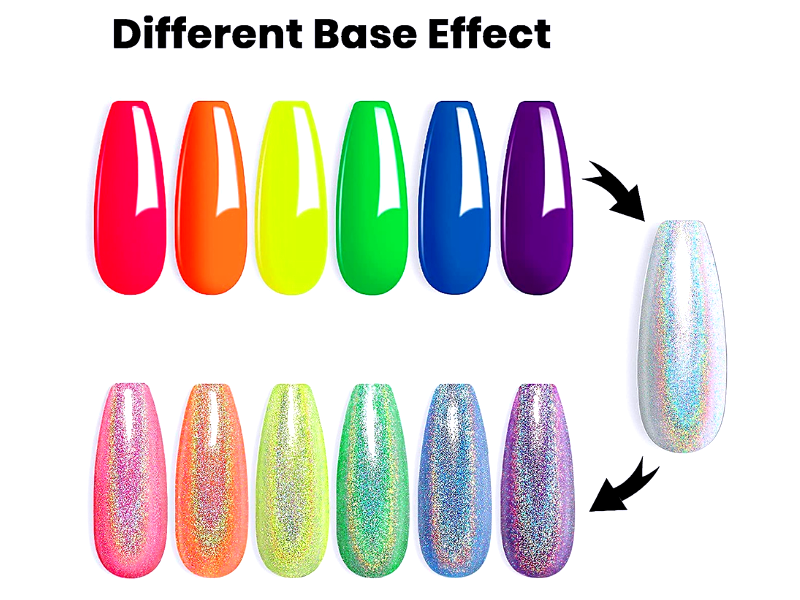
Summary
Understanding the difference between holographic and iridescent nail polish is key to achieving your desired nail art effect. Holographic polishes offer a direct, rainbow-colored spectrum under light, ideal for a bold look. Iridescent polishes provide a color-shifting shine that changes with different angles and lighting, perfect for a more subtle, sophisticated style. Both types have their unique charm and can elevate your nail game to the next level.
FAQ
Can I use both holographic and iridescent polishes together?
Absolutely! Combining both can give your nails an extraordinary and unique look, playing with both rainbow colors and shifting hues.
Are these polishes more expensive than regular nail polishes?
They can be, depending on the brand. The specialty pigments in holographic and iridescent polishes might make them slightly pricier than standard polishes.
Do I need any additional equipment to apply these polishes?
No special equipment is needed, though using a base coat and a top coat can enhance the overall effect and longevity of your manicure.
